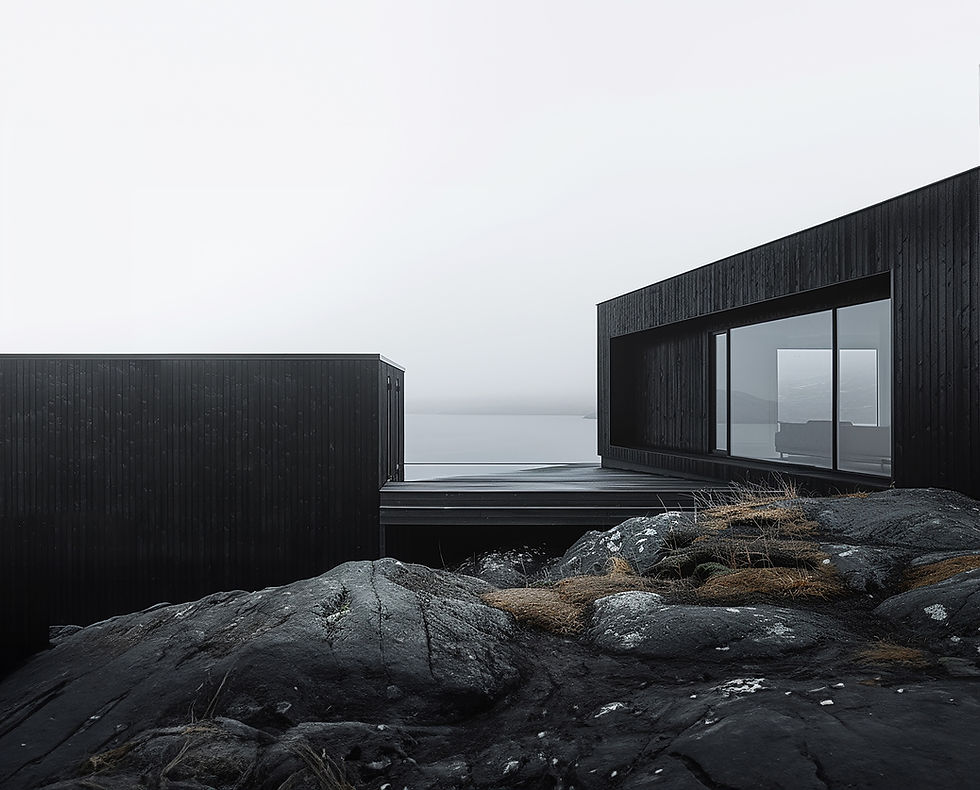PARAGRAPH 139: BUILDING A NEW COUNTRY HOUSE IN THE GREEN BELT
- RRuddick
- Sep 29
- 3 min read

For many people, the dream of living in the countryside means more than just fresh air and open views. Some hope to design and build their own home in a rural setting. But if the land lies within the Green Belt, things become complicated. Planning rules are strict, and only a few exceptions allow new homes in these areas. One of those exceptions is found in the National Planning Policy Framework (NPPF), known as Paragraph 139.
In this post, we will explore what Paragraph 139 means, how it works, and whether it could help you achieve the goal of building a house in the countryside.
Paragraph 139: building a new country house in the green belt.
What is the Green Belt and why is it protected?
The Green Belt is land that has been set aside to stop towns and cities from sprawling outwards. Its purpose is to keep the countryside open and prevent neighbouring settlements from merging into one another. Development is tightly controlled. Local authorities rarely allow new buildings here, except in very specific situations.
So, if you are hoping to build on Green Belt land, you will need to show that your proposal falls into one of the recognised exceptions.
The role of Paragraph 139
Paragraph 139 of the NPPF is sometimes called the “country house clause.” It provides a way for an applicant to gain permission to build a home in the Green Belt if they can demonstrate that the design is truly exceptional.
In practice, this means that the house must be outstanding in terms of architecture, and it must raise the standard of building design in rural areas. It is not enough for a design to be attractive or modern. It needs to be the kind of building that could not reasonably be refused, because it adds genuine value to the countryside.

What counts as “truly outstanding”?
This is the most challenging part. Planning officers and inspectors will not accept ordinary designs. To be successful, your house must display exceptional creativity and innovation. Think about how it responds to the setting, how it uses sustainable materials, and how it blends into or enhances the landscape.
You will need a strong design team, usually led by an architect with a proven track record of high quality work. The planning application must be detailed and convincing, with evidence of the design’s merit and the benefits it brings.

How often are Paragraph 139 houses approved?
The short answer is: not very often. Across England, only a small number of applications under Paragraph 139 are approved each year. That is because the standard is extremely high and only the best proposals succeed.
However, successful examples do exist, and they show that it is possible with the right approach. These houses often go on to win awards or gain recognition in architectural circles.

Is Paragraph 139 the right route for you?
If your dream is to live in a one-of-a-kind house in the countryside, and you are prepared to invest in top level design, then it may be worth exploring. But it is not a quick or easy path. It requires patience, financial commitment, and a willingness to aim for the very highest standard of architecture.
For many self-builders, other routes to planning permission may be more realistic, such as converting existing buildings or exploring rural exception policies. Still, if you want to pursue something remarkable, Paragraph 139 offers a unique opportunity.
Working with the right team
If you are serious about exploring a Paragraph 139 application, choosing an architect with the right experience is essential. Richard Ruddick Architects work frequently in the countryside and have a deep understanding of the challenges and opportunities of rural sites.
Our team combines creative design with a practical grasp of planning policy, making us an ideal partner to guide you through the process. Whether you are at the very start of your journey or ready to develop detailed plans, we can help turn your vision of a countryside home into reality.
Useful Resources
In Summary
Building a home in the Green Belt is never straightforward. But for those with vision, determination, and the right professional support, Paragraph 139 could turn the dream of a countryside home into reality.
We hope that you choose to work with us, but always check any other architect is properly qualified. The ARB Register provides a list of all fully qualified architects – if they aren’t on this list, they are not an architect.
Get in touch to start your journey today!
© This article and all content is copyright of Richard Ruddick Architecture Limited and shall not be copied, adapted or reproduced in any way.





Comments